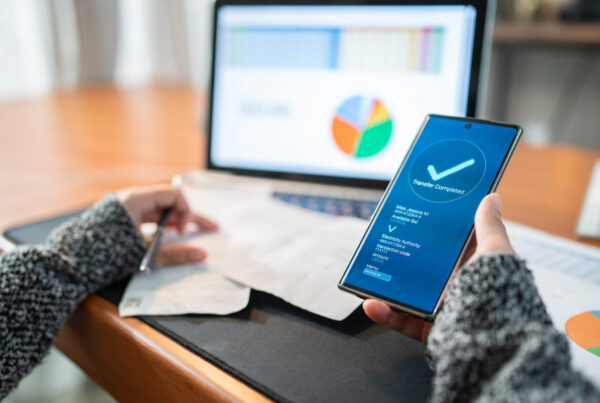Online to offline retail is on the rise. According to Statista, the volume of eCommerce sales has increased significantly over the past years and will account for 21.8% global retail sales by 2021.
However, 70% of millennials would rather visit stores to make purchases although they spend 7.5 hours per day online. 87% of customers research products online before they purchase in offline stores.
What does all this mean?

Customers want the convenience of online with the service of physical retail. The best way to control the customer experience and journey is to combine online and offline retail to grow your sales together. Advances in technology have led many retailers to offer online to offline (O2O) shopping experiences to customers.
Which raises the question: “How to implement it?”
In this article, we’ll provide strategies for merchants who have already got a brick-and-mortar store to launch and get their retail store online.
Overview of online to offline in retail business
By definition, online to offline is an omnichannel strategy with 2 main goals:
- Attract potential customers from online channels to buying in physical stores
- Deliver a seamless experience throughout 3 purchasing stages: before, during, and after the sales
Best practices of online to offline retail recommend using both channels to complement each other instead of being discrete or competing among themselves, including:
- Come and pick up online purchased products directly at the chosen stores with additional services such as assembly or installation
- Purchase products online during a visit to physical stores
- Allow returning online purchased orders and products to physical stores

To learn more about this concept and its benefit from an eCommerce perspective, you can read our article O2O: A breakdown of Online-to-Offline Business.
How to define online to offline business model
It can be difficult to know where to start your online to offline transformation with so many business factors to consider. Let’s start with a foundation of what you already have. Once you get the concepts and fundamentals right, you’re ready to leverage your strengths and adjust your business model to accommodate new priorities or deal with pressures.
There are 3 key factors of an online to offline ecosystem:
Data management
To set up your online to offline strategy effectively, you should start evaluating the data you already collected till now. Shape your current situation by asking yourself some questions:
- Are you storing your customer data in multiple locations?
- What parts of your data are regularly maintained? Then, how much of your data is useful and accurate?
For future marketing actions, it’s essential to collect data into a central repository. Through modern solutions such as CRM systems, rich data sources allow AI to support many automated actions. For example, when you want to target a specific customer group, it can suggest and generate targeted offers automatically from the existing data.

Customer insights
After you have drawn a big picture of your customers from rich data, next you’ll need to understand customer insights and spot different trends, behaviors, and patterns. You should group your customers into different segments to create exclusives and offers that really resonate with them. This helps customers avoid the annoyance of receiving irrelevant offers.
- Have you updated your customer personas?
- Is your customer profile based on assumptions or research?
- What else can you do to have deeper insights into your customers such as their preferences, priorities, and goals?
You can conduct customer groups or one-on-one interviews to get their point of view. These details combined with data will provide clear direction to execute your online to offline strategy.
Software and solutions
Omnichannel operations can exist with hundreds of customer touchpoints, so an online to offline solution can be extremely complex or simple, depending on your approach. You need to ensure that your O2O solutions and systems have strong connections between processes to keep the data consistent.
Some Magento eCommerce solutions don’t need complicated integrations and can be quickly deployed across platforms using your existing eCommerce assets, but still increase customer engagement and boosts your online revenue.

How to transit my business online
There are a number of big decisions to make to take your business online. We understand that every business has different needs and priorities. So we’ve listed the 8 most important requirements and priorities for any type of business to consider:
Decide a platform
The biggest step to take your offline store online is choosing a platform:
- If your business already has a website, you can ask or research your web hosting provider. Most of them offer an eCommerce plugin. From there, you can add eCommerce features to the existing site. Starting your online store is even easier in case the eCommerce plugin can connect to your POS system.
- If you haven’t got a website yet, you can check whether your POS system has native integrations into any eCommerce platform. For example, if your store is using native-Magento POS, you can easily set up an online store on Magento platform, creating a seamless shopping experience and shortening the transition time. What’s more? The inventory level at your offline store will sync automatically and accurately with your online store, making it easier to manage both sales channels.
Divide online and offline products
Next, you need to determine how you will divide your offline and online commerce:
- What products from your brick-and-mortar store will be sold online?
- Which products are suitable for online sales but not in the store?

That depends on your characteristics and business model. Especially, there are some products with restrictions or prohibitions on selling digitally. Aside from legal restrictions, there will be some products that won’t make much sense selling online, such as small quick-buy items near the checkout counter.
Handle shipping and fulfillment
When you open your online store, delivering products to customers is no longer as easy as receiving payments directly, putting items in bags, and handing them over the POS counters. You’ll need to draw a clear fulfillment and shipping strategy.
- One way is to take care of the packing and shipping products yourself.
- The second way is to use a 3rd-party service. The service provider will store, pack, and deliver online orders directly to your customers on your behalf. If you choose this option, try to choose a logistic provider that can integrate directly into your eCommerce platform to simplify the process. Some vendors can give you shipping options with just a few clicks.
Whichever way you choose, make sure to follow the proper pick-pack process and sanitize your products and packaging before sending them out.

Choose eCommerce POS for a seamless transition
An in-store POS system linked to the eCommerce platform is the easiest and fastest way to convert online to offline strategy. It manages data and workflow for both your physical and online business at the same time:
- Update inventory from online to offline instantly, avoiding inventory errors
- Manage payments with general sales reports and separate reports for each channel
- Synchronize online promotions to apply to offline stores
Prepare human resources
When you open a new sales channel, you’ll probably need someone to manage it. Some job positions for you to consider:
- eCommerce store manager
- Digital marketing specialist
- Online merchandiser
- Graphic designer
With a small and medium-sized business, those roles can be yours or the current employees will take on additional jobs. However, make sure that your online channel is managed by people who have a firm and deep understanding of how the new eCommerce channel works. In case you need help with technology, don’t be afraid to consult and get outside resources.

Combine online and offline marketing
You should keep your community and customers up to date on your upcoming online store.
- How will you promote your new online store?
- What is the fastest and best way to reach your audience?
- Can you automate some of your marketing efforts on your eCommerce platform?
To avoid a sporadic campaign where you mix online and offline marketing, it’s important to keep the tone, graphics, and marketing messages consistent across all platforms. Your offer needs to flow seamlessly across all the channels you’re using. To integrate different channels, you can coordinate as follows:
- Place your website domain on business cards
- Invite your offline customers to like and follow your social media
- Introduce your offline promotion on your social, blog, and website
- Involve your loyal customers to advocate your brand with user-generated content by posting on social media and using your hashtags
Moreover, you can exploit features of your POS software or eCommerce plugins, including:
- Help customers shop directly on posts via social media (Instagram, Pinterest, and Facebook)
- Create marketing content
- Prepare email marketing
- Run online Ads
- Boost your SEO to get a higher rank in search engine

Launch: Get your retail store online
You can consider the following 3 events to introduce your brand to potential customers and have a really effective launching sequence:
- Creating a pre-launch landing page: You can set up a “coming soon” website and post on social media about it, with a hint of what’s to come. This generates buzz among your followers about your upcoming launch.
- Running giveaways: You can organize a giveaway to celebrate the launch of your eCommerce website. This can help generate interest in your brand, inform your audience about the value of your products and services, and gather information about potential customers.
- Post some content sneak peeks: You should also prepare content to showcase your product and publish it on your business blog or social media accounts right before or after your launching. This increases brand awareness and drives traffic to your website.
Track results from online to offline marketing
When making major decisions about channel investments and marketing strategies, most businesses expect the highest possible return on budget. However, it will be difficult to achieve marketing goals if you only consider online activities and ignore offline avenues. Hence, there’s no such thing as a perfect set of KPIs for all campaigns.

Link KPIs for online to offline marketing
When you want to optimize your online to offline campaign, it’s important to consider which KPIs to change or eliminate. For many businesses, in-store teams and eCommerce teams tend to work as separate units. So it’s of the utmost importance that you align their sales and marketing initiatives so that everything and all the people across channels are working towards the same goal.
Tracking campaign efficiency
As a store owner, it’s helpful to know how much you have to pay to acquire your customers (your customer acquisition costs or CAC) to increase traffic and ultimately sales, including investments in paid search and email campaigns.
Then, you can use Google Analytics to track conversion data including 4 sections:
- Audience: who your customers are (location, demographics, device technology, and retention) and see the impact of your marketing efforts on different customer segments:
- Number of users and sessions
- Average session duration
- Average pages per session
- Ratio of new to returning visitors
- Bounce rate
- Acquisition: how customers come to your website and what channels bring the best traffic:
- Organic vs. paid sessions
- Google Ads
- Search engine queries
- Behavior: how your customers interact on your website, which gives you insight into the overall customer experience and the impact on engagement and retention:
- Newsletter opens
- Average time on page
- Top queries in website search
- Top 10 landing pages
- Conversions: Goal conversion rate. This metric tracks whether your customers are taking your desired actions, helping you to focus your marketing efforts on areas that make the most impact.
If those costs are greater than the total revenue they are generating, then your online to offline marketing is underperforming. From your marketing reports, you can make informed decisions for future changes.
Conclusion
Combining online and offline retail into a unified shopping experience keeps customers satisfied and increases profits. It can open up a lot of unimaginable opportunities for retailers.
Giants leading businesses like Alibaba and Amazon acknowledge that online to offline commerce is the next step in their eCommerce growth. Then surely it will also bring some improvement points for the development of your business.
While digital transformation is a long way off, hopefully this article has provided the backbone to help you confidently step by step to bring your offline store online.
If you’re looking to launch a Magento store and connect your online and offline channels, you can book a free consultation with our experts. Together we can help you build a solution and timeline that helps you innovate your business and adapt to new challenges.















Excellent insights on bridging the gap between offline and online retail! Emphasizing integrated inventory management, streamlined POS systems, and a unified customer experience is crucial for modern retail success.